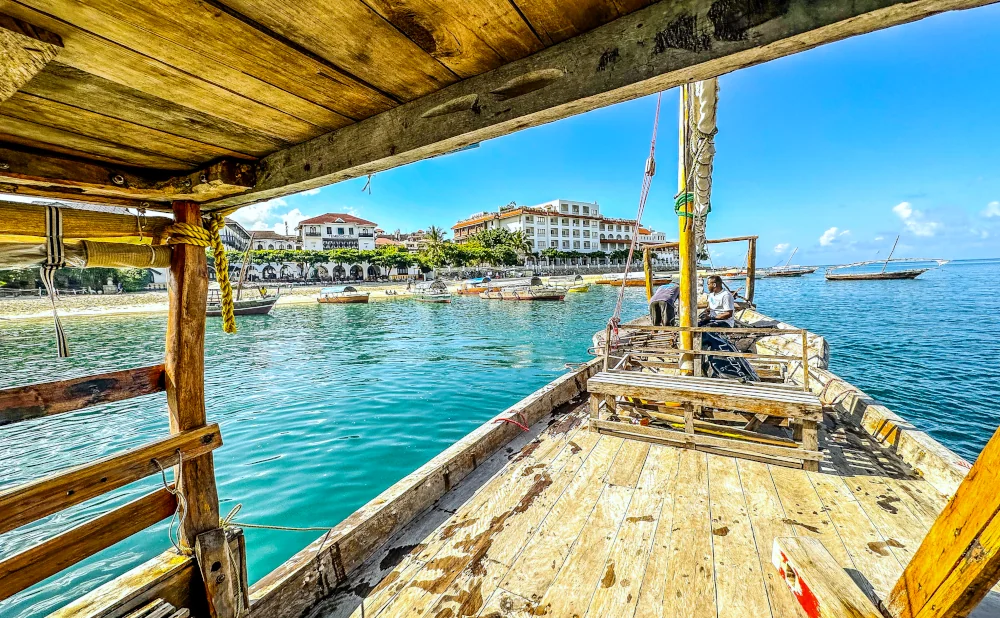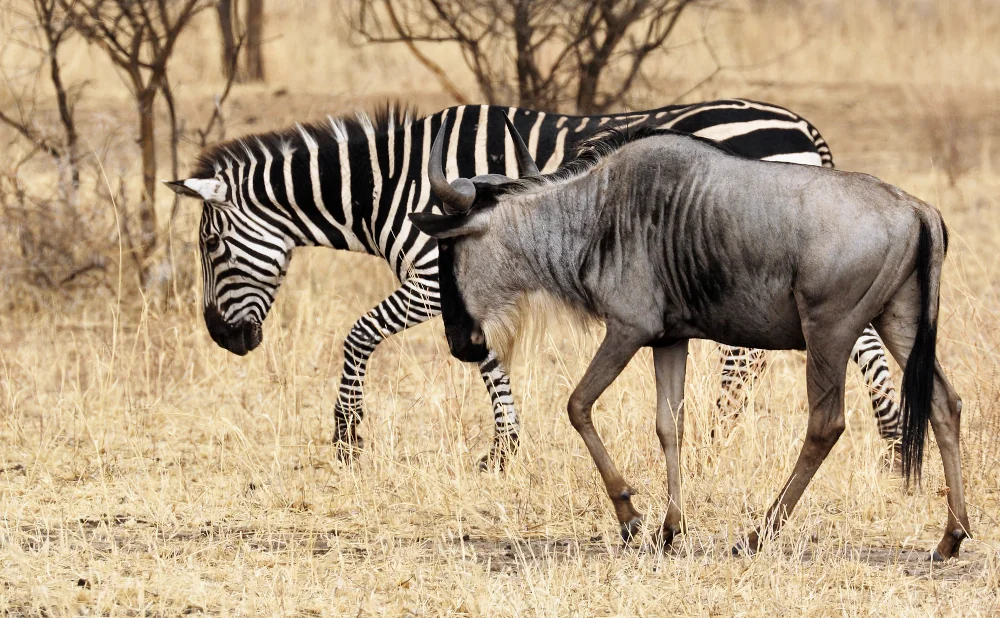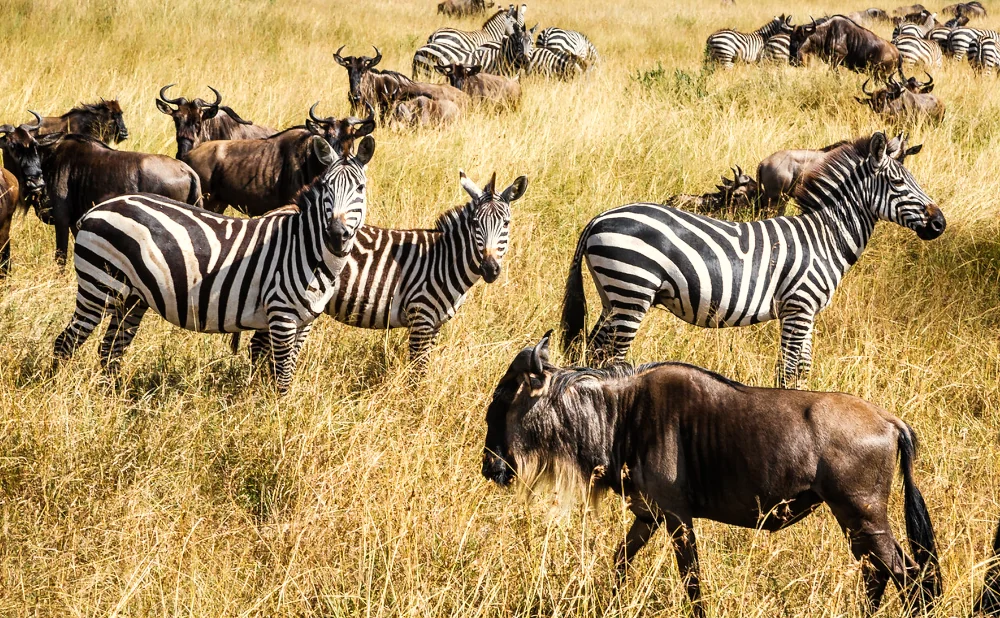Comparing Safari Experiences: Tanzania vs South Africa
Choosing the perfect safari destination can be a daunting task. With so many incredible locations to choose from, it's hard to know where to start.
Two of the most popular safari destinations are Tanzania and South Africa. Each offers unique experiences, landscapes, and wildlife encounters.
In this article, we'll delve into a comprehensive comparison of safari experiences in these two countries. We aim to provide you with the information you need to make an informed decision for your next adventure.
We'll explore the diverse wildlife, the range of safari activities, and the different types of accommodation available. We'll also touch on the best times to visit, the costs involved, and the health and safety considerations.
Moreover, we'll discuss the role of tourism in conservation and community engagement. This is particularly important for those who want their travel to have a positive impact.
Whether you're drawn to the Great Migration in Tanzania's Serengeti or the world-renowned game drives in South Africa's Kruger National Park, this guide will help you weigh your options.
So, let's embark on this journey of discovery and comparison. Let's find the safari experience that best suits your desires and expectations.
""
Why Compare Tanzania and South Africa for Your Safari?
Tanzania and South Africa are both top-tier safari destinations. They are renowned for their abundant wildlife, stunning landscapes, and diverse safari experiences. However, each offers a unique safari experience that caters to different preferences and expectations.
Tanzania is famous for the Great Migration, where millions of wildebeest and zebras traverse the Serengeti plains. It's also home to Africa's highest peak, Mount Kilimanjaro, and the unique Ngorongoro Crater. These features make Tanzania a dream destination for nature lovers and adventure seekers.
On the other hand, South Africa offers a more varied landscape, from the savannahs of Kruger National Park to the deserts of the Kalahari. It also boasts malaria-free safari options and a rich cultural heritage. South Africa's well-developed infrastructure and diverse offerings make it an excellent choice for first-time safari-goers and families.
Key Factors in Choosing a Safari Destination
When choosing a safari destination, several factors come into play. These factors can significantly influence your overall safari experience. It's essential to consider these aspects to ensure your safari meets your expectations.
Wildlife Diversity
The diversity of wildlife is a crucial factor. Both Tanzania and South Africa are home to the Big Five - lions, elephants, buffalos, leopards, and rhinos. However, each country offers unique wildlife experiences. For instance, Tanzania is known for the Great Migration, while South Africa is famous for its abundant bird species.
Types of Safari Activities
The types of safari activities available also matter. Game drives are standard in both countries, but other activities like night drives, walking safaris, and hot air balloon rides vary. South Africa also offers unique experiences like shark diving and wine tours.
Accommodation Options
Accommodation options can range from luxury lodges to budget-friendly tented camps. Both Tanzania and South Africa offer a wide range of options to suit different budgets and comfort levels. Some travelers may prefer the rustic charm of a tented camp, while others may opt for the luxury of a lodge.
Cultural Experiences
Cultural experiences add depth to your safari. In Tanzania, you can visit Maasai villages, while in South Africa, you can explore the rich history of the Zulu and Xhosa tribes.
Conservation Efforts
Lastly, consider the conservation efforts of your chosen destination. Both Tanzania and South Africa are committed to wildlife conservation and offer opportunities for tourists to contribute. These can range from visiting conservation projects to choosing eco-friendly accommodations.
The Wildlife of Tanzania vs South Africa
Africa is a continent teeming with diverse wildlife. Tanzania and South Africa, two of its most popular safari destinations, offer a wealth of animal sightings. However, the wildlife experiences in these two countries can be quite different.
The Big Five and Other Notable Species
Both Tanzania and South Africa are home to the Big Five. These include the lion, elephant, buffalo, leopard, and rhinoceros. However, the chances of spotting these animals can vary between the two countries. For instance, the black rhino is more commonly seen in Tanzania, while the white rhino is more prevalent in South Africa.
In addition to the Big Five, each country boasts a variety of other notable species. Tanzania is home to the largest concentration of wildlife per square kilometer in the world, including large herds of wildebeest, zebra, and gazelle. South Africa, on the other hand, is known for its diverse birdlife, with over 900 species recorded.
Unique Wildlife Experiences: The Great Migration vs Kruger's Game Drives
Tanzania offers the unique spectacle of the Great Migration. This annual event sees over a million wildebeest, zebra, and gazelle traverse the Serengeti in search of fresh grazing. It's a sight that leaves many visitors awestruck.
In contrast, South Africa's Kruger National Park is renowned for its game drives. These drives offer excellent opportunities to spot the Big Five, as well as cheetahs, wild dogs, and a variety of antelope species. The park's diverse habitats, from savannahs to riverine forests, ensure a rich wildlife experience.
Safari Activities: What to Expect in Tanzania and South Africa
A safari is more than just wildlife spotting. It's about immersing yourself in the African wilderness and experiencing the thrill of the unknown. Both Tanzania and South Africa offer a range of safari activities, each with its own unique appeal.
Game Drives and Walking Safaris
Game drives are the backbone of any safari. In Tanzania, game drives in the Serengeti and Ngorongoro Crater offer unparalleled wildlife viewing. South Africa's Kruger National Park, on the other hand, is known for its self-drive safaris, giving you the freedom to explore at your own pace.
Walking safaris are another popular activity. These safaris allow you to experience the African bush up close and personal. In Tanzania, walking safaris are often combined with cultural tours to local Maasai villages. In South Africa, walking safaris are a highlight in private reserves, where visitor numbers are limited.
Night Drives and Balloon Safaris
Night drives offer a different perspective on the African wilderness. They provide a chance to spot nocturnal creatures that are often missed during daytime drives. While night drives are not permitted in Tanzania's national parks, they are a highlight in South Africa's private reserves.
Balloon safaris are a unique way to experience the African landscape. In Tanzania, a balloon safari over the Serengeti is a once-in-a-lifetime experience. South Africa also offers balloon safaris, particularly in the beautiful Pilanesberg National Park.
Cultural Tours and Additional Adventures
Cultural tours provide insight into the local way of life. In Tanzania, visits to Maasai villages are a common feature of many safaris. South Africa, with its rich cultural heritage, offers township tours and visits to historical sites.
Additional adventures can also enhance your safari experience. In Tanzania, this could mean a trek up Mount Kilimanjaro. In South Africa, a trip to the stunning Cape Winelands or a shark cage dive in Gansbaai could be on the cards.
Accommodation: From Luxury Lodges to Tented Camps
Choosing the right accommodation can greatly enhance your safari experience. Both Tanzania and South Africa offer a range of options, from luxury lodges to tented camps. Each offers a unique blend of comfort, authenticity, and immersion in the natural environment.
Comparing Comfort and Authenticity
Luxury lodges offer the highest level of comfort. In Tanzania, lodges in the Serengeti and Ngorongoro Crater offer stunning views, gourmet dining, and even private plunge pools. South Africa's luxury lodges, particularly those in private reserves, are known for their personalized service and exclusive game viewing experiences.
Tented camps, on the other hand, offer a more authentic safari experience. In Tanzania, mobile tented camps follow the Great Migration, ensuring prime wildlife viewing. South Africa's tented camps, often located in private reserves, offer a blend of rustic charm and modern comfort.
Eco-Friendly and Sustainable Options
Eco-friendly and sustainable options are increasingly popular. Many lodges and camps in both Tanzania and South Africa are committed to minimizing their environmental impact and supporting local communities. Look for accommodations with eco-certifications, such as Fair Trade Tourism in South Africa or Responsible Tourism Tanzania. These certifications ensure that your stay contributes to the conservation of Africa's precious wildlife and supports the well-being of local communities.
When to Go: Best Times for Safari in Tanzania and South Africa
The best time for a safari in Tanzania or South Africa depends on what you want to see and do. Both countries offer unique wildlife experiences throughout the year, but certain seasons may be more favorable for specific activities or sightings.
Seasonal Weather Patterns and Wildlife Behavior
In Tanzania, the dry season (June to October) is generally considered the best time for wildlife viewing. Animals congregate around water sources, making them easier to spot. The Great Migration in the Serengeti also peaks during this time.
South Africa's wildlife viewing is excellent year-round, but the dry winter months (May to September) offer the best game viewing in Kruger National Park. The sparse vegetation and lack of water make animals easier to spot.
Peak Seasons and Off-Peak Advantages
Peak seasons in both countries coincide with the dry seasons and school holidays. These periods offer excellent wildlife viewing but can also be crowded.
Off-peak seasons, while potentially wetter, offer the advantage of fewer tourists and lower prices. In South Africa, the green season (November to March) is fantastic for bird watching. In Tanzania, the calving season (January to February) is a great time to witness the circle of life in action.
Costs and Budget: Planning Your African Safari
Planning a safari in Tanzania or South Africa requires careful consideration of costs. Both countries offer a range of safari experiences to suit different budgets, but it's important to understand what's included in your safari package and what additional costs you may incur.
Safari Package Prices
In Tanzania, safari packages can range from budget camping safaris to luxury lodge experiences. Prices typically include park fees, accommodation, meals, and game drives. The cost can vary greatly depending on the level of luxury, the number of days, and the parks visited.
South Africa offers a similar range of options, from budget self-drive safaris in Kruger National Park to luxury experiences in private game reserves. Prices are generally higher in private reserves due to the exclusivity and high standard of accommodation.
Additional Costs to Consider
Beyond the safari package price, there are additional costs to consider. These can include international and domestic flights, visas, travel insurance, vaccinations, and personal expenses. Tipping your safari guide and camp staff is also customary in both countries.
Tips for Finding the Best Value
To find the best value, consider traveling during the off-peak season when prices are lower. Booking your safari well in advance can also secure better deals. Lastly, working with a reputable tour operator like African Golden Trips can ensure you get the most out of your budget. They can tailor a safari experience to your preferences and provide transparent pricing.
Health and Safety: Preparing for Your Safari
Health and safety are paramount when planning a safari in Tanzania or South Africa. Both countries have specific health considerations and safety measures that travelers should be aware of.
Vaccinations and Malaria Prevention
For Tanzania, travelers are advised to have vaccinations for diseases like Hepatitis A, Typhoid, and Yellow Fever. Malaria is also a risk, so antimalarial medication is recommended.
South Africa has a lower risk of malaria, especially in its southern regions. However, vaccinations for Hepatitis A and Typhoid are still advised. Some safari areas are malaria-free, offering a great option for those who prefer not to take antimalarial medication.
Safety Tips and Emergency Services
In terms of safety, both Tanzania and South Africa have established protocols for wildlife viewing to ensure the safety of visitors. Emergency services are available, but may be limited in remote safari areas. It's important to follow the advice of your guides and respect the wildlife to ensure a safe safari experience.
Conservation and Community: The Role of Tourism
Tourism plays a significant role in both wildlife conservation and community engagement in Tanzania and South Africa. The revenue generated from safaris contributes to the protection of wildlife and the improvement of local communities.
Supporting Wildlife Conservation
In Tanzania, park fees and conservation levies from safaris are used to fund conservation efforts. These efforts include anti-poaching units and habitat restoration projects. The presence of tourists also deters poachers, indirectly contributing to wildlife protection.
South Africa has a similar approach. Revenue from safaris supports conservation initiatives within the country's national parks and private reserves. Some safari operators also run their own conservation projects, contributing to the protection of endangered species and ecosystems.
Engaging with Local Communities
In both countries, tourism provides employment opportunities for local communities. Many safari lodges and camps employ staff from nearby villages, contributing to local economies. Some safari operators also offer community visits, allowing tourists to learn about local cultures and traditions. These visits often include opportunities to purchase handmade crafts, providing an additional source of income for local communities.
""
Making Your Decision: Tanzania or South Africa?
Summary of Key Considerations
Choosing between a safari in Tanzania or South Africa depends on your personal preferences. Consider the wildlife you want to see, the type of safari activities you enjoy, and your budget. Also, think about the time of year you plan to travel and the level of comfort you desire.
Final Thoughts on Choosing Your Safari Destination
Both Tanzania and South Africa offer unique safari experiences. Whether you're drawn to the Great Migration in Tanzania or the diverse landscapes of South Africa, both destinations promise unforgettable wildlife encounters and rich cultural experiences.
In conclusion, whether you choose Tanzania or South Africa for your safari adventure, you're in for a treat. Both countries offer unique experiences that will leave you with memories to last a lifetime. Happy safari planning!











